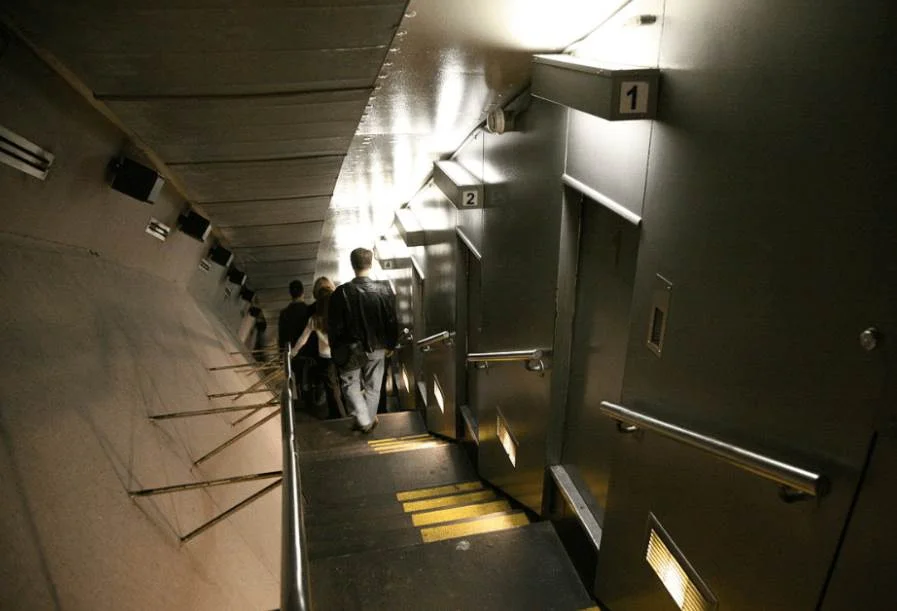It’s one of the most amazing arches in the world that was built for a special reason.
In this post, you’ll discover the ultimate list of facts about the Gateway Arch, one of the most prominent landmarks and popular buildings in St. Louis, Missouri.
1. The Gateway Arch has a special meaning
The Gateway Arch is one of the most iconic monuments in the United States. It’s located on the banks of the Mississippi River in St. Louis, Missouri, and is an internationally recognized symbol of the city.
It was built to commemorate the westward expansion of the United States. It’s meant to represent a “Gateway to the West.” It was dedicated to the American People.
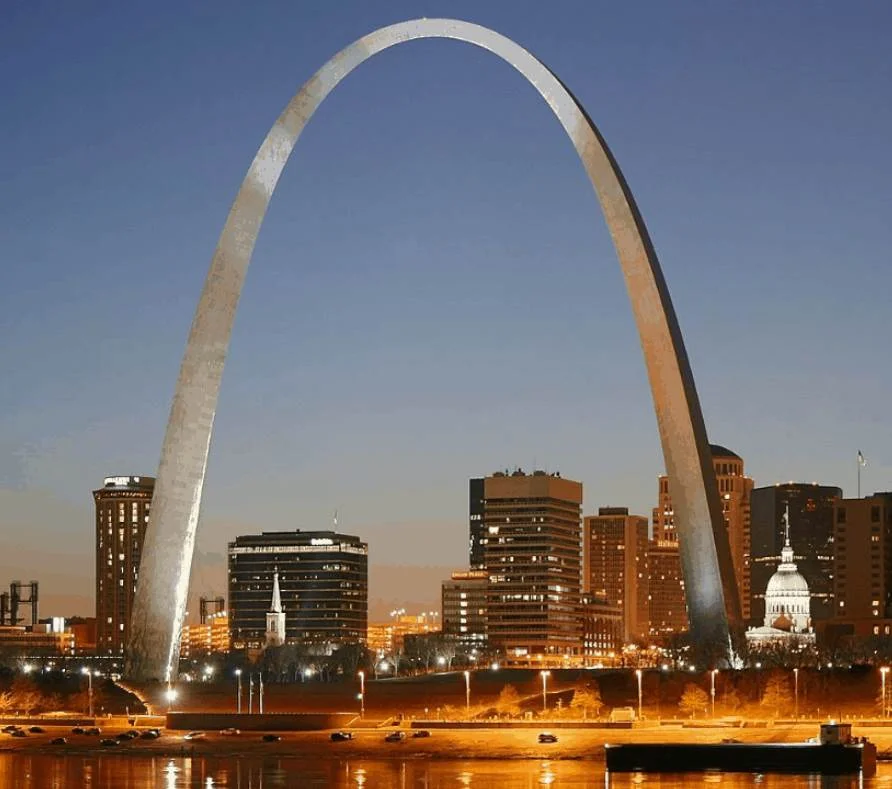
2. It’s located in a national park
The Gateway Arch is the centerpiece of the Gateway Arch National Park. The park used to be known as the Jefferson National Expansion Memorial but had its name changed in 2018.
The area was originally dedicated as a national memorial but was redesignated as a national park. It’s currently maintained by the National Park Service, a federal agency that manages all national parks in the United States.
The park has a total area of 91 acres (36.8 hectares) and is located along the Mississippi River.

3. It holds some amazing records
The monument stands 630 feet tall (192 meters) which makes it the tallest accessible building in all of Missouri.
Apart from this record, it is also the tallest arch in the entire world and the tallest man-made monument in the Western Hemisphere.

The arch is also the tallest stainless steel monument in the world.
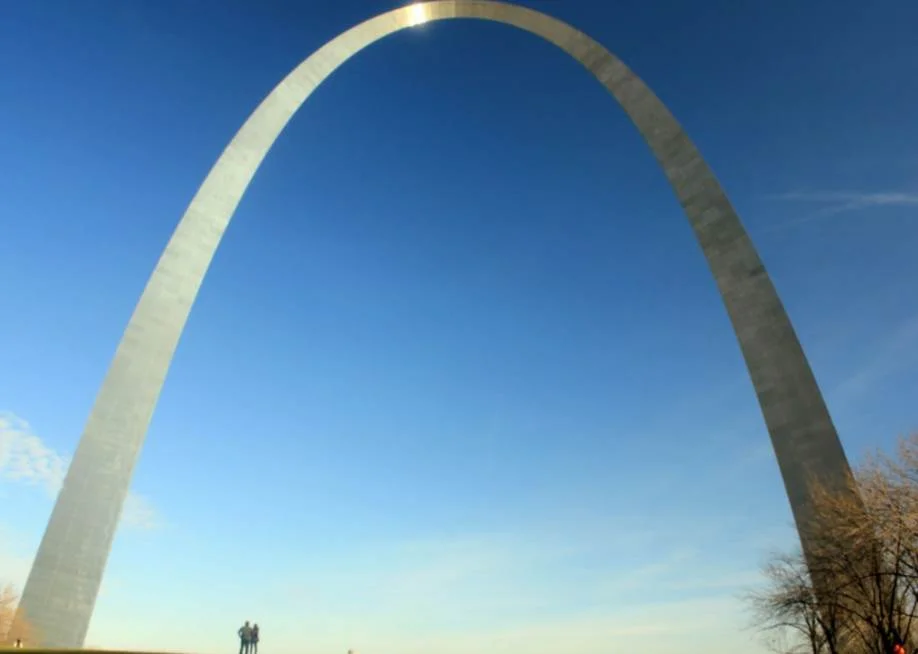
4. The original committee was formed in 1933
The idea to build a memorial in the St. Louis riverfront area originated in 1933 when civic leader Luther Ely Smith visited the George Rogers Clark National Historical Park in Vincennes, Indiana.
His idea was that the memorial in that location could be replicated in St. Louis and would have a double benefit. It would both revive the riverfront area, and stimulate the economy, which hadn’t recovered yet from the stock market crash of 1929.
A committee was formed after a meeting with Bernard Dickmann in 1933 called the “Jefferson National Expansion Memorial Association,” nicknamed “Jenny May” (JNEMA).

5. There wasn’t much approval among the community for the project
Having an idea like this wasn’t something that received much approval from the general public. Using public funds in one of the worst crises (the Great Depression) in American History to build a huge memorial didn’t seem logical at the time.
Smith was, however, convinced that his idea was a great one and claimed that “Spiritual things” were just as important as practical things.
He would, in the long run, turn out to be exactly right.
6. $30 million USD was needed, but much less was raised
The JNMAE committee had estimated that an astounding USD 30 million would be needed for erecting a huge monument. This was an incredible sum in the 1930s during the Great Depression.
Unsurprisingly, they were unable to get that kind of money together, but they did get funding from Executive Order 7253 signed by President Roosevelt on December 21, 1935.
With this signature, the monument was both approved and partially funded with a total of USD 6.75 million plus $2.25 million worth of city bonds.

8. The location of the arch was chosen in 1935
Another important aspect of the Executive Order apart from the fact that the monument got approved was that the location was chosen as well.
Because the Mississippi River had played such an important role in both the expansion of St. Louis and as a gateway to the West, a site near the river was to become the National Historic Site of the monument.

9. 40 blocks of buildings were demolished to clear the land
The first couple of years after the Executive Order was signed were used to acquire all the buildings that were located on the designated land.
These years were filled with legal disputes regarding the condemnations which effectively made landowners leave their properties.
On January 27, 1939, the United States Circuit Court of Appeals ruled that the condemnation was legal, and by June 14, a total of USD 6.2 million was distributed to landowners.
Demolition of all the buildings to clear the area started on October 9, 1939.
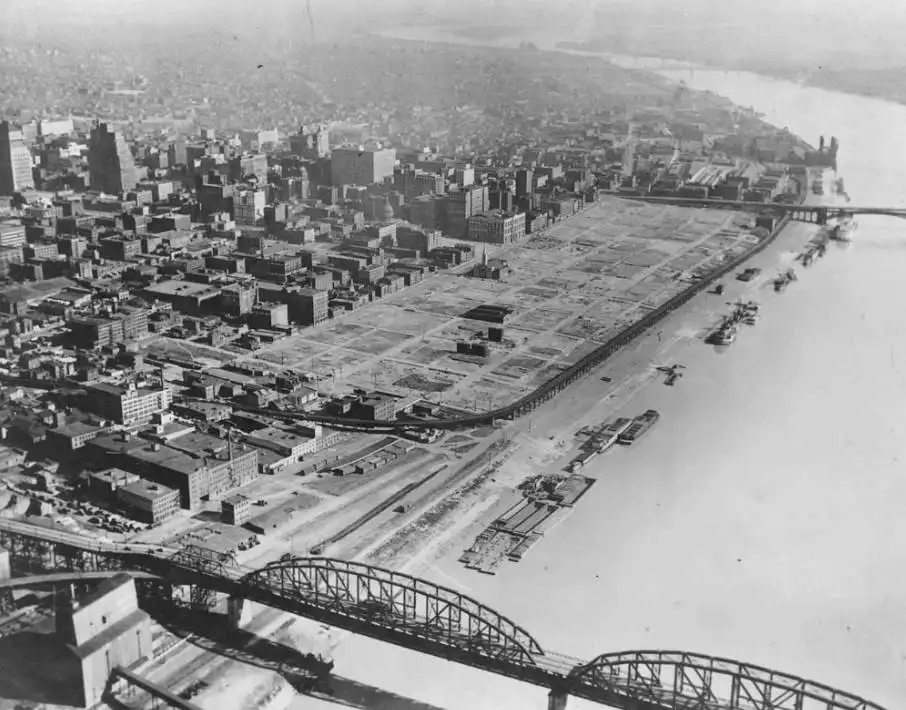
10. The design was chosen through an architectural competition
By 1944, the general idea about the monument was determined and it was formulated as follows by JNEMA:
The monument should be transcending in spiritual and aesthetic values. One central feature: a single shaft, a building, an arch, or something else that would symbolize American culture and civilization.
The core ideas of the design of the Gateway Arch, formulated in November 1944
The idea to organize an architectural competition was also proposed, and in January 1945, the committee announced a two-stage design competition that would cost $225,000 to organize.
The winner would receive an amazing cash prize!
11. The winner of the competition was a Finnish-American architect
On February 18, 1948, the jury unanimously concluded that the winning design was submitted by Finnish-American architect Eero Saarinen, who completed his design in 1947.
One of the most interesting facts about the Gateway Arch is that the competition also featured Saarinen’s father, Eliel Saarinen, and famous designers Charles and Ray Eames, who were pioneers of modern architecture in America.
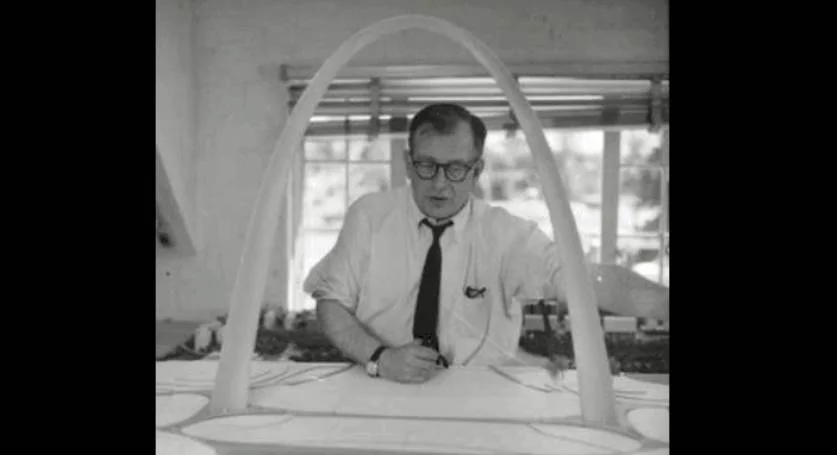
12. Construction of the arch didn’t start until 1963
One of the biggest problems before construction could commence was the railroad track which was blocking views of the riverfront from the memorial site. These tracks were built in the 1930s.
It wasn’t until July 1, 1958, and after an immense legal battle that 6 congressional bills were introduced which would solve the issue and move the railroad tracks to another location.
The bill was eventually signed on September 7, 1958, by President Eisenhower. Construction could finally start after nearly 3 decades of planning!
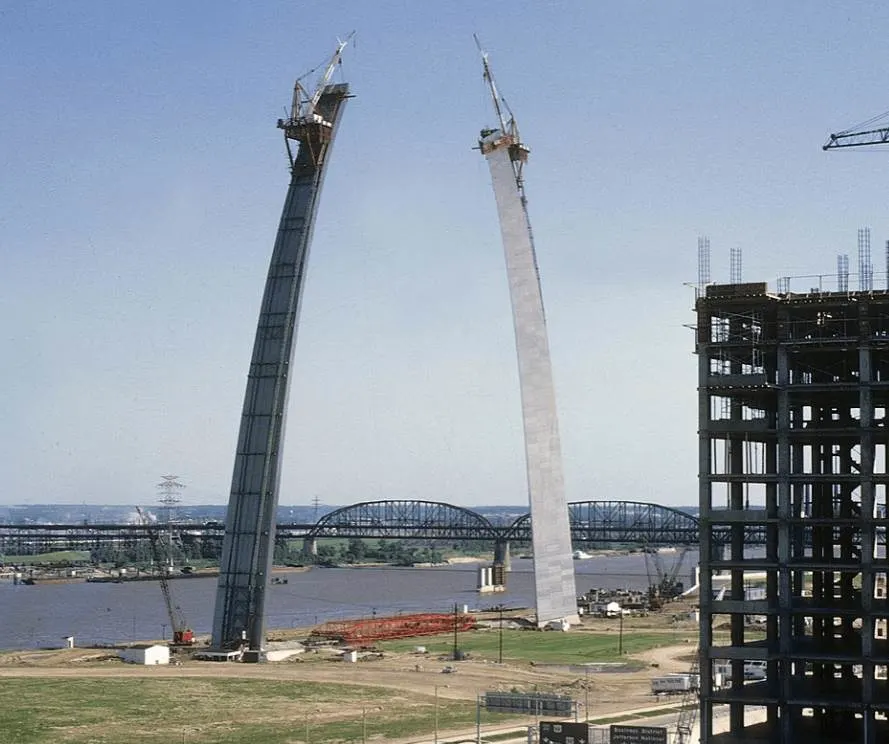
13. The construction didn’t provide the 5,000 proclaimed jobs
Apart from serving as a memorial to commemorate the Expansion to the West, another big point was that the construction of such a large moment would create a lot of jobs.
It was estimated that about 5,000 jobs would be created in several years! This wasn’t nearly the case as only less than 100 construction workers were hired to do the job.
14. And nobody died while building the arch
One of the weirdest facts about the Gateway Arch is that an actuarial firm predicted that at least 13 people would die during the construction of the arch.
Nobody ended up losing his life in the end. Because of this prediction, safety measures were rigorously followed which resulted in multiple delays.
Well better safe than sorry!
15. It consists of 142 prefabricated sections
The arch is a weighted catenary arch, which means that its legs are wider and the upper section is narrower as it moves upwards.
The arch was assembled with a total of 142 stainless steel sections which are each 12 feet long (3.7 meters).
The construction company that built the arch was “MacDonald Construction Co.” and project manager Stan Wolf mentioned that “it was easier to build a 62-story building than the arch.”
Why?
“Because in a regular building, everything is straight and simply one thing on top of the other, in the arch, everything is curved!”
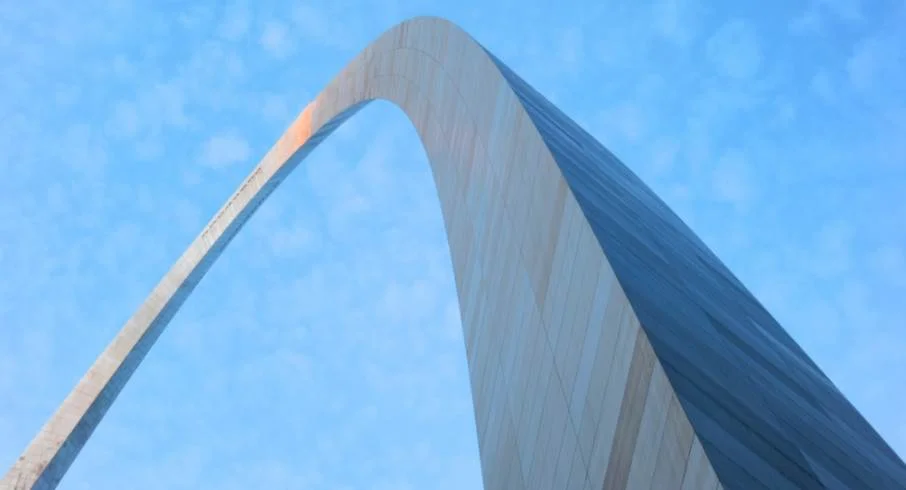
16. It was finally opened to the public in 1967
Even though the Gate Arch was completed on October 28, 1965, which was the day that the topping-out ceremony was held and the keystone was placed.
Both President Lyndon B. Johnson and Mayor Alfonso J. Cervantes attended this ceremony as well as 1,500 schoolchildren.
it wasn’t until June 10, 1967, that the arch was officially inaugurated and the visitor center was opened to the public. Going up wasn’t possible until July 24, 1967.
The arch was finally officially dedicated the following year on May 25, 1968, and a dedication plaque was unveiled.
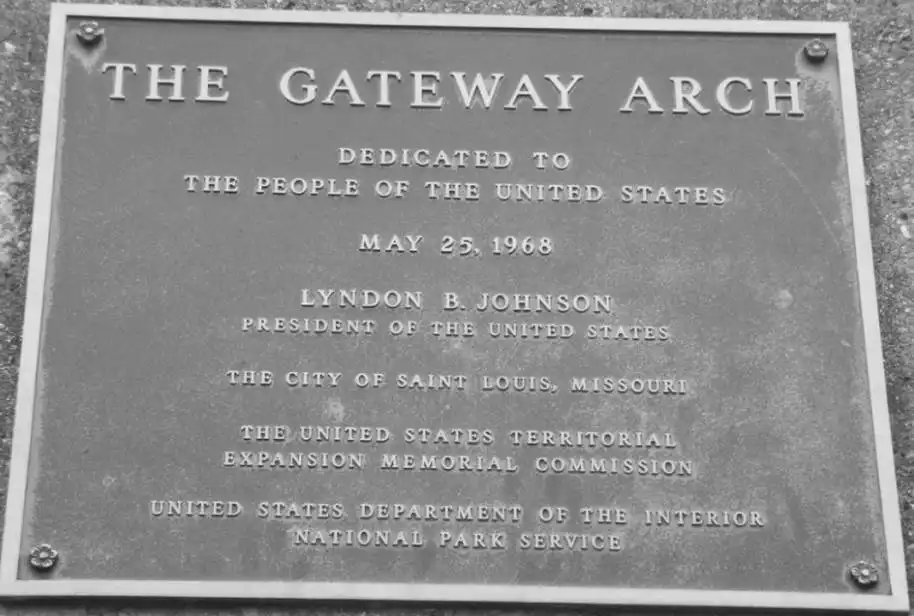
17. The Gateway Arch made the area boom
Every great idea gets opposition, and with the arch, Luther Ely Smith received plenty of it. Nobody could see his vision back in the 1930s.
This all changed after the arch was completed. it didn’t just become an internationally recognized symbol of the city, it also made the area around it boom!
In the Riverfront area, the 50,000-seat Busch Stadium was erected and multiple other projects were completed such as a 30-story hotel, several office towers, four parking garages, and an apartment complex.
Unfortunately, both Smith (died in 1951) and the designer of the arch, Eero Saarinen (died in 1961) didn’t see the completed Gateway Arch.
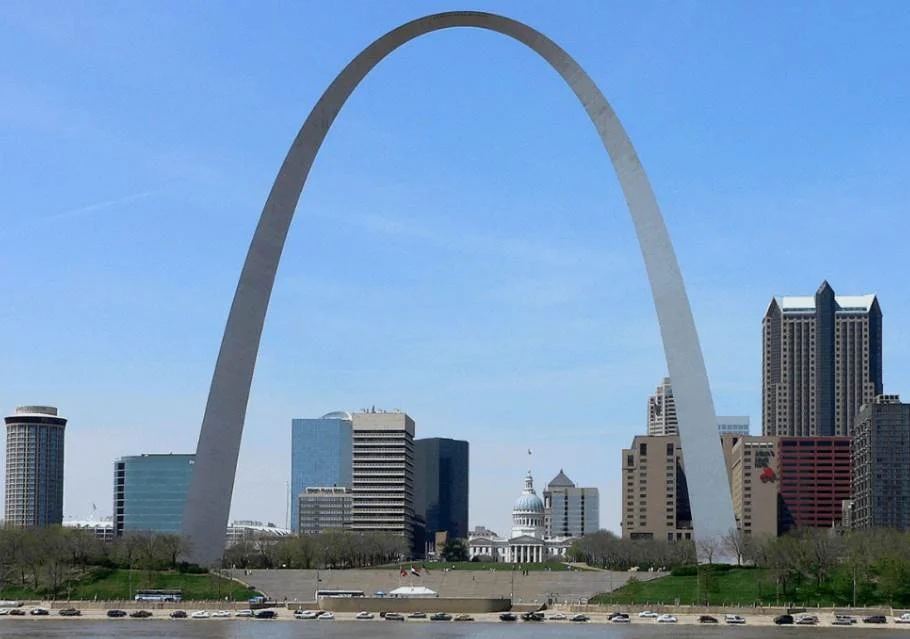
18. The Gateway Arch can change its colors
On May 18, 1966, the first proposal to integrate a lighting system into the arch which would aluminate it was submitted. It wasn’t until July 1998 that funding for an arch lighting system was approved by St. Louis’s Gateway Foundation.
The arch lighting system contains 44 different colors which can be used to accentuate support for various causes, including breast cancer awareness for example when it’s colored pink.
Apart from its light shows, it’s a popular place for fireworks displays as well.
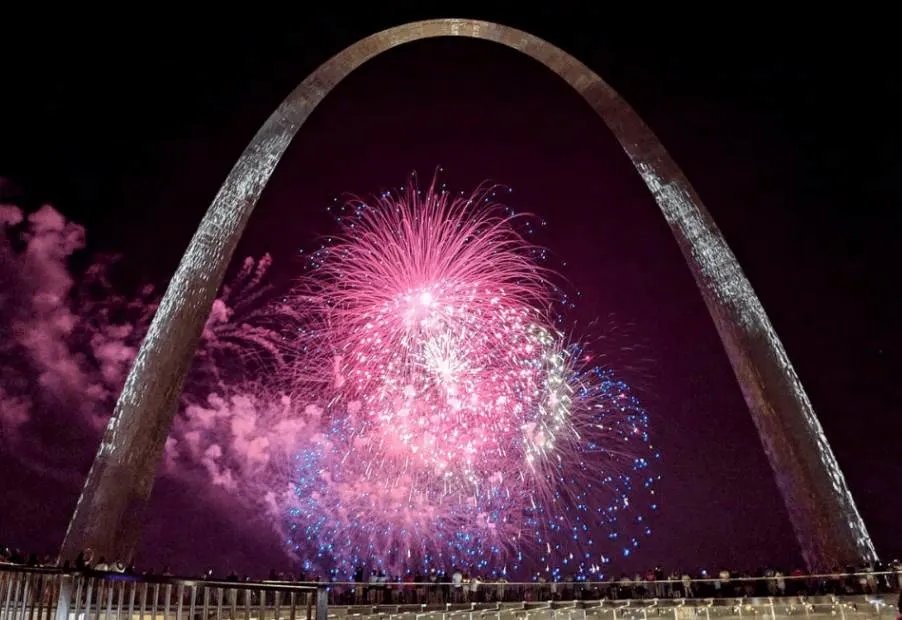
19. The arch has an underground visitor center
Directly below the arch, there’s a 70,000-square-foot (6,500 square meters) visitor center. The center is located between the legs of the arch.
The visitor center includes a museum that houses several hundred exhibits about the United States’ westward expansion in the 19th century.
In July 2018, a $176 million expansion and renovation project was completed which includes a 46,000-square-foot underground area featuring interactive story galleries, video walls, a fountain, and a cafe.
20. There’s an observation deck on top of the arch
Right on top of the arch, you can get some of the most amazing views of the area. The arched observation deck is just 65 feet (20 meters) long and 7 feet (2.1 meters) wide and can hold up to 160 people.
There are 16 windows on each side which allow you to take a peek and get views like the one below.
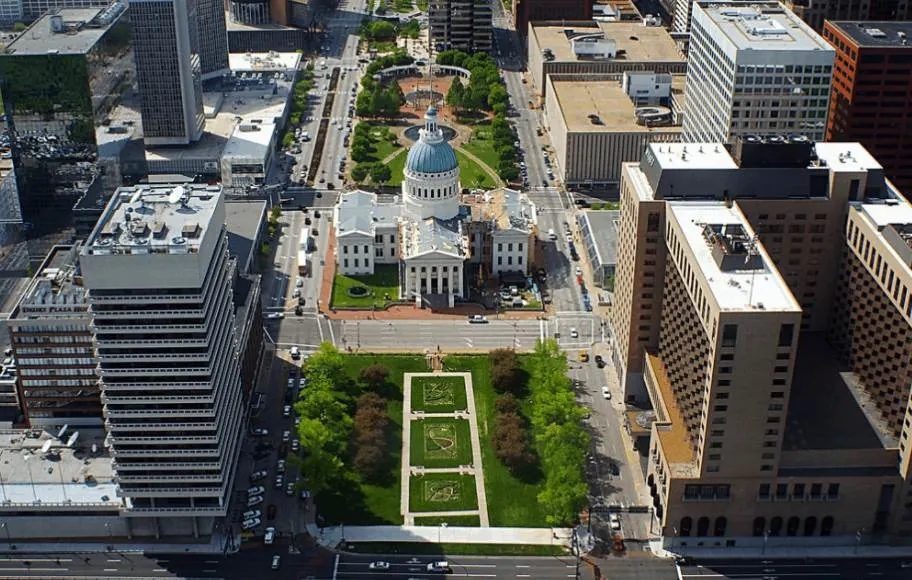
21. There are 3 ways to reach the top
So how do you reach the top of the Gateway Arch?
There are 3 ways:
- Two sets of 1,076-step emergency stairs (one on each side).
- An elevator going to a height of 372 feet (113 m) and can hold 12 passengers.
- A tram that takes you to the top in a capsule.
